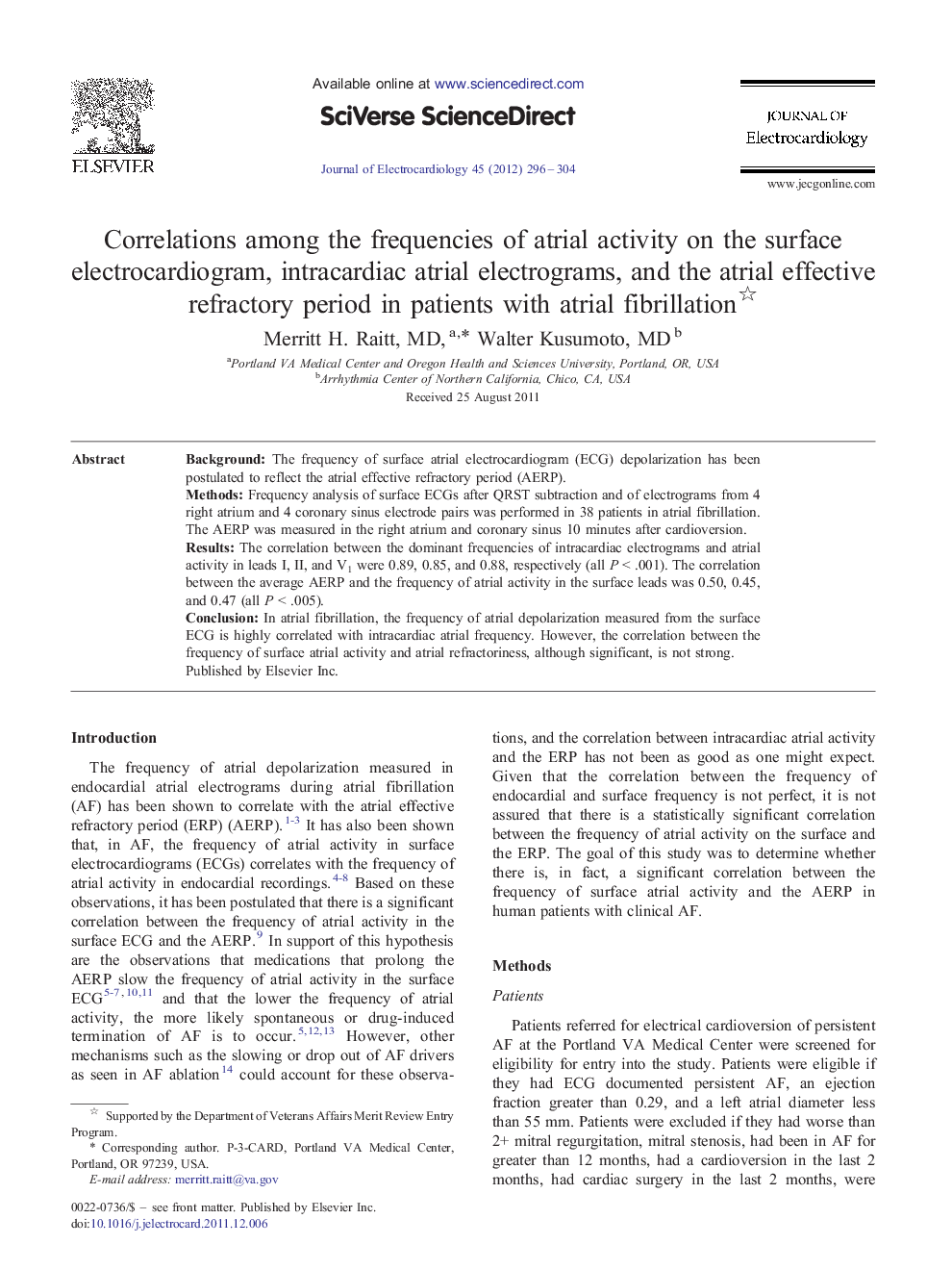| کد مقاله | کد نشریه | سال انتشار | مقاله انگلیسی | نسخه تمام متن |
|---|---|---|---|---|
| 5986891 | 1178868 | 2012 | 8 صفحه PDF | دانلود رایگان |

BackgroundThe frequency of surface atrial electrocardiogram (ECG) depolarization has been postulated to reflect the atrial effective refractory period (AERP).MethodsFrequency analysis of surface ECGs after QRST subtraction and of electrograms from 4 right atrium and 4 coronary sinus electrode pairs was performed in 38 patients in atrial fibrillation. The AERP was measured in the right atrium and coronary sinus 10 minutes after cardioversion.ResultsThe correlation between the dominant frequencies of intracardiac electrograms and atrial activity in leads I, II, and V1 were 0.89, 0.85, and 0.88, respectively (all P < .001). The correlation between the average AERP and the frequency of atrial activity in the surface leads was 0.50, 0.45, and 0.47 (all P < .005).ConclusionIn atrial fibrillation, the frequency of atrial depolarization measured from the surface ECG is highly correlated with intracardiac atrial frequency. However, the correlation between the frequency of surface atrial activity and atrial refractoriness, although significant, is not strong.
Journal: Journal of Electrocardiology - Volume 45, Issue 3, MayâJune 2012, Pages 296-303